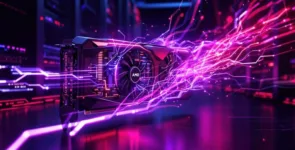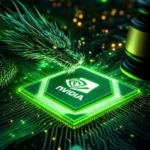For years, the world of high-performance AI training has been a kingdom ruled by a single sovereign: NVIDIA. But the latest results from the MLPerf industry benchmark signal a powerful challenger is not just at the gates, it is breaching the walls. In a landmark submission, AMD showcased staggering performance with its Instinct MI300X GPUs that demonstrated not only record-breaking speed but a rapidly maturing software ecosystem. This isn’t just another incremental update; it’s a declaration that the AI hardware race is now a fiercely contested, two-horse race, promising a new era of innovation and competition for the entire industry.
Setting the Gold Standard with MLPerf
To understand the gravity of AMD’s achievement, one must first understand MLPerf. Organized by the MLCommons consortium, MLPerf is the Olympics of AI hardware and software. It provides a level playing field where companies like AMD, NVIDIA and Google submit their platforms to be tested on a suite of real-world, machine-learning training tasks. These benchmarks are the industry’s de facto gold standard for measuring performance, making them a critical barometer for enterprise customers deciding where to invest billions in their AI infrastructure. A strong showing here isn’t just about bragging rights; it’s about proving viability, performance and readiness for the most demanding AI workloads on the planet.
For this latest round, AMD submitted results for a standard server configuration featuring eight of its Instinct MI300X accelerators. This platform is AMD’s heavyweight contender, designed specifically to tackle the massive computational demands of training and deploying large language models (LLMs) and other generative AI systems.
Blistering Speed and Near-Perfect Scaling
The results speak for themselves. AMD’s submission demonstrated remarkable performance, particularly on some of the most popular and demanding models in use today. Using its robust ROCm 6 open software stack, the 8x MI300X server showed impressive “time-to-train” results, a critical metric that measures how quickly a system can train a model to a target level of accuracy.
One of the most significant takeaways was the platform’s scaling efficiency. In the world of AI, throwing more GPUs at a problem doesn’t guarantee a proportional increase in speed. The magic lies in making those GPUs work together seamlessly. AMD’s submission demonstrated near-linear scaling as it increased the number of GPUs, a testament to the maturity of its Infinity Fabric interconnect technology and the ROCm software. For enterprise customers, this is a crucial proof point: it means that as their AI needs grow, they can confidently scale their AMD-based infrastructure and expect predictable, powerful performance gains.
Expanding the Ecosystem with New Models
Perhaps more important than the raw performance numbers is what they were achieved on. For the first time, AMD submitted MLPerf results for training two of the industry’s most influential open-source models: Meta’s Llama 3 70B and Mistral’s Mixtral 8x7B. This is a massive strategic victory. For years, the primary barrier to AMD’s adoption in AI has not been the hardware itself, but the incumbency of NVIDIA’s CUDA software ecosystem. By demonstrating out-of-the-box, high-performance support for the very models that developers and businesses are clamoring to use, AMD is dismantling that barrier piece by piece.
This move signals that the ROCm software stack has reached a new level of maturity and usability that is capable of handling the complex demands of state-of-the-art models. It sends a clear message to the AI community that AMD is not just a hardware provider, but a serious platform contender committed to supporting the open-source models that are driving much of the innovation in generative AI.
The Head-to-Head with NVIDIA
Ultimately, every MLPerf submission is measured against the reigning champion. While direct, perfectly apples-to-apples comparisons are complex, the results place AMD’s MI300X in the same elite performance tier as NVIDIA’s formidable H100 GPUs. In several key benchmarks, AMD’s platform demonstrated performance that was not just competitive, but in some cases exceeded that of the NVIDIA submission in similar hardware categories.
This shatters the long-held perception that NVIDIA is the only viable option for cutting-edge AI training. It provides enterprise CIOs and AI researchers with what they have desperately needed: a choice. The ability to field a competitive bid from a second high-performance vendor introduces competition that can drive down prices, accelerate innovation and reduce the risks associated with being dependent on a single supplier.
Wrapping Up
AMD’s latest MLPerf results are a watershed moment for the AI industry. They represent the culmination of years of strategic investment in both silicon and software, resulting in a platform that can stand toe-to-toe with the best in the world. By delivering record-breaking performance, demonstrating near-perfect scaling and embracing the open-source models that define the modern AI landscape, AMD has proven it is no longer just an alternative but a true competitor for the AI throne. For a field that thrives on competition and innovation, this is unequivocally great news and heralds a future with more choice, better performance and faster progress for everyone.








